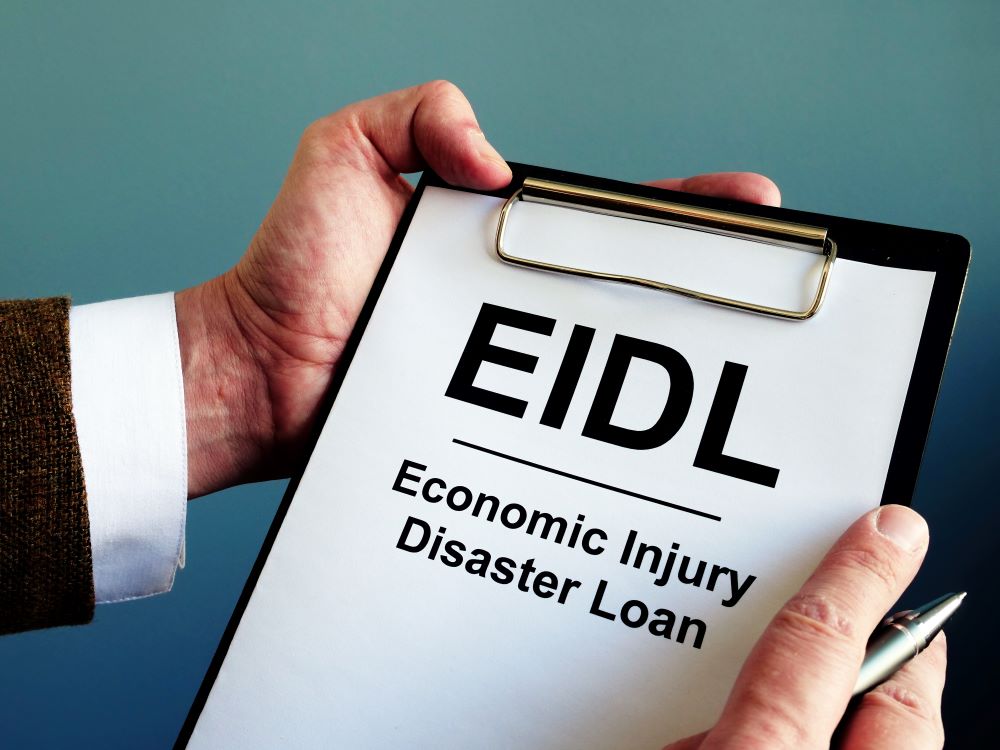
March 21, 2022

On March 16, 2022, the Small Business Administration (SBA) announced that all existing Economic Injury Disaster Loan (EIDL) borrowers will receive an extended deferment period. The EIDL program has undergone several stops and starts, amendments, and extensions since it was offered as an option during the COVID-19 pandemic. Since many Atlanta companies have relied on the program to address cash flow needs during and post-pandemic, it is important to know when payments are due and the specific details of the new deferment changes. To help clients, prospects, and others, Wilson Lewis has provided a summary of the key details below.
The EIDL program existed prior to the COVID-19 pandemic. Funds are low-interest, fixed-rate, long-term loans to help businesses recover from federally declared disasters, like floods, storm damage, wildfires, or earthquakes. Before the pandemic, 80 percent of EIDL funds went to individual renters and homeowners.
For COVID-19, borrowers received up to 30-year loans with a fixed rate of 3.75 percent (2.75 percent for nonprofits). Throughout the pandemic, the EIDL program administered $351 billion in funds to 3.9 million borrowers. Up until recently, funds could only be used to support working capital and operating expenses, like payroll, rent or mortgage, utilities, and business debt.
Loan advances were also part of the EIDL program during COVID-19. These one-time payments of up to $10,000 were reserved for certain small businesses and funds did not need to be repaid and were non-taxable.
Since its start for COVID-19 relief, the EIDL program has undergone several changes.
It was first opened on March 30, 2020, but stopped on April 15, 2020, when funds were exhausted almost at once. At that time, borrowers could apply for a maximum of $500,000 and a one-time $10,000 advance. On May 3, 2020, the maximum loan amount decreased to $150,000 to reach as many affected businesses as possible.
Applications were reopened on May 4, 2020 for certain agricultural businesses and reopened in mid-June 2020 to all other eligible borrowers. Initially, payments were deferred for one year. Then, in July 2020, the SBA stopped accepting applications for the EIDL advance. By that point, more than 5.7 million emergency grants had been distributed and more than $203 billion in EIDL funds were also disbursed.
The Consolidated Appropriations Act in December 2020 allocated extra funds for targeted advance payments. A few months later, the American Rescue Plan also allocated extra funds for targeted advance payments and loans. The maximum amounts changed again in April 2021, when SBA increased the limit from $150,000 to $500,000.
Finally, in September 2021, the maximum amount for EIDL loans was increased from $500,000 to $2 million. Acceptable use of loan proceeds expanded to include normal operating expenses and working capital, such as payroll, equipment, and paying off debt, including commercial debt and federal business debt.
As of January 1, 2022, the EIDL program is no longer available for COVID-19 aid.
The recently announced changes provide borrowers with a 30-month loan deferment period. This builds upon previously issued extensions. As before, interest will continue to accrue but payments aren’t required, although partial or full payments will be accepted.
The extended deferment is for all existing COVID-EIDL loans previously approved in 2020, 2021, and 2022. Other SBA loans are not included and multiple SBA and/or disaster loans cannot be consolidated. Existing EIDL borrowers won’t see monthly payment notices; instead, the SBA will communicate updates via email.
Regarding record-keeping, borrowers must keep tax returns and financial records for three years after funds are spent.
That depends. Although pausing payments would have the benefit of increasing short-term cash flow, some loans could result in balloon payments. If a loan has an established preauthorized debit (PAD) or recurring payments, those will still occur. Affected borrowers would need to contact the SBA to request a stop to these payments during the deferment.
Accrued interest is another factor to consider. Borrowers will want to do the math and calculate how much extra the interest would add to the loan balance after the deferment. Like other interest-bearing debt, the short-term payment relief could yield a loan that far exceeds the principal balance. In the end, it may not be wise to pay more than what was borrowed, above and beyond the standard interest and loan term.
Contact Us
The new deferment period provides additional relief to Atlanta businesses that received an EIDL. However, it is important to carefully review the impact of accruing interest on the loan obligation. If you have questions about the information outlined above or need assistance with a tax or accounting issue, Wilson Lewis can help. For additional information call 770-476-1004 or click here to contact us. We look forward to speaking with you soon.